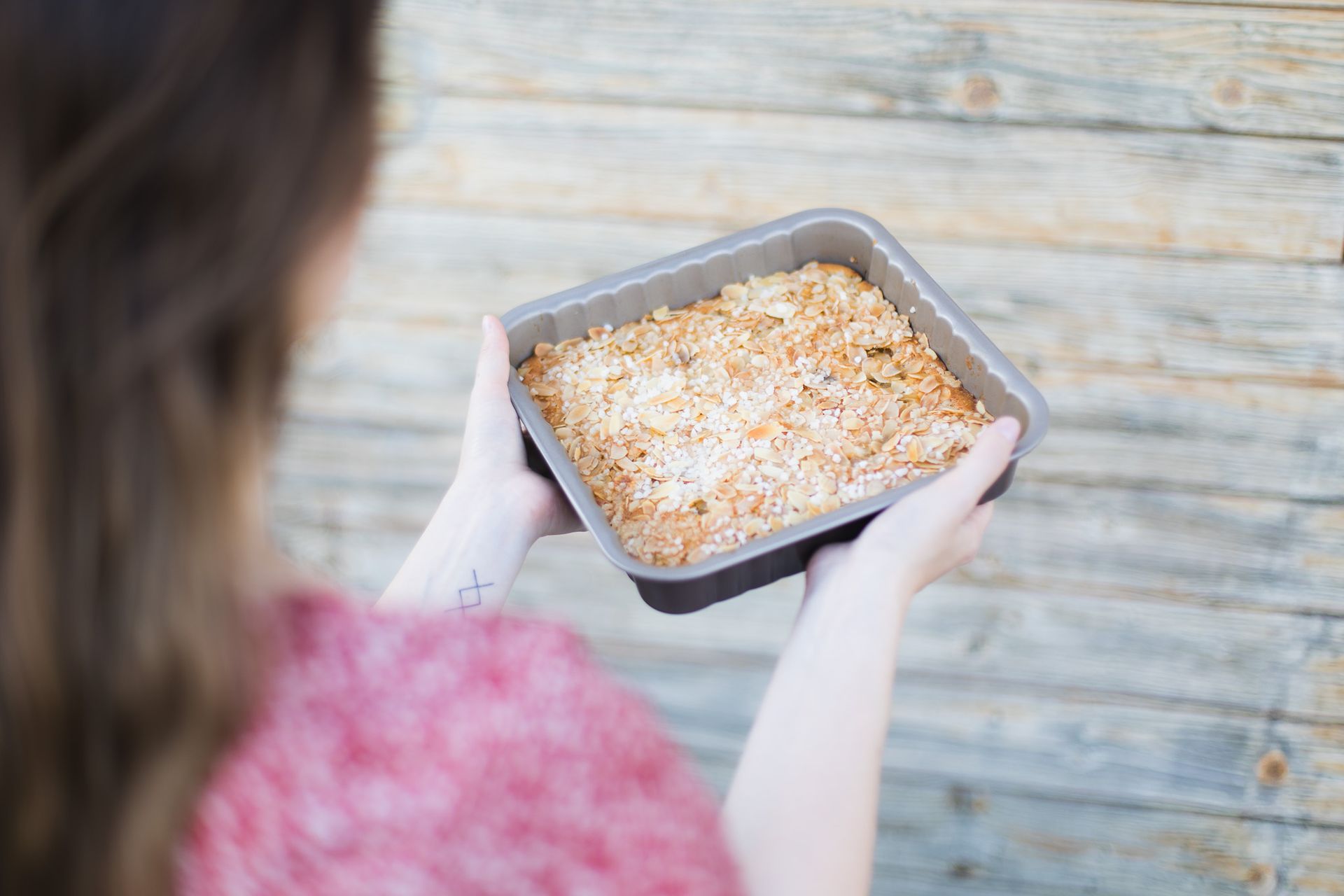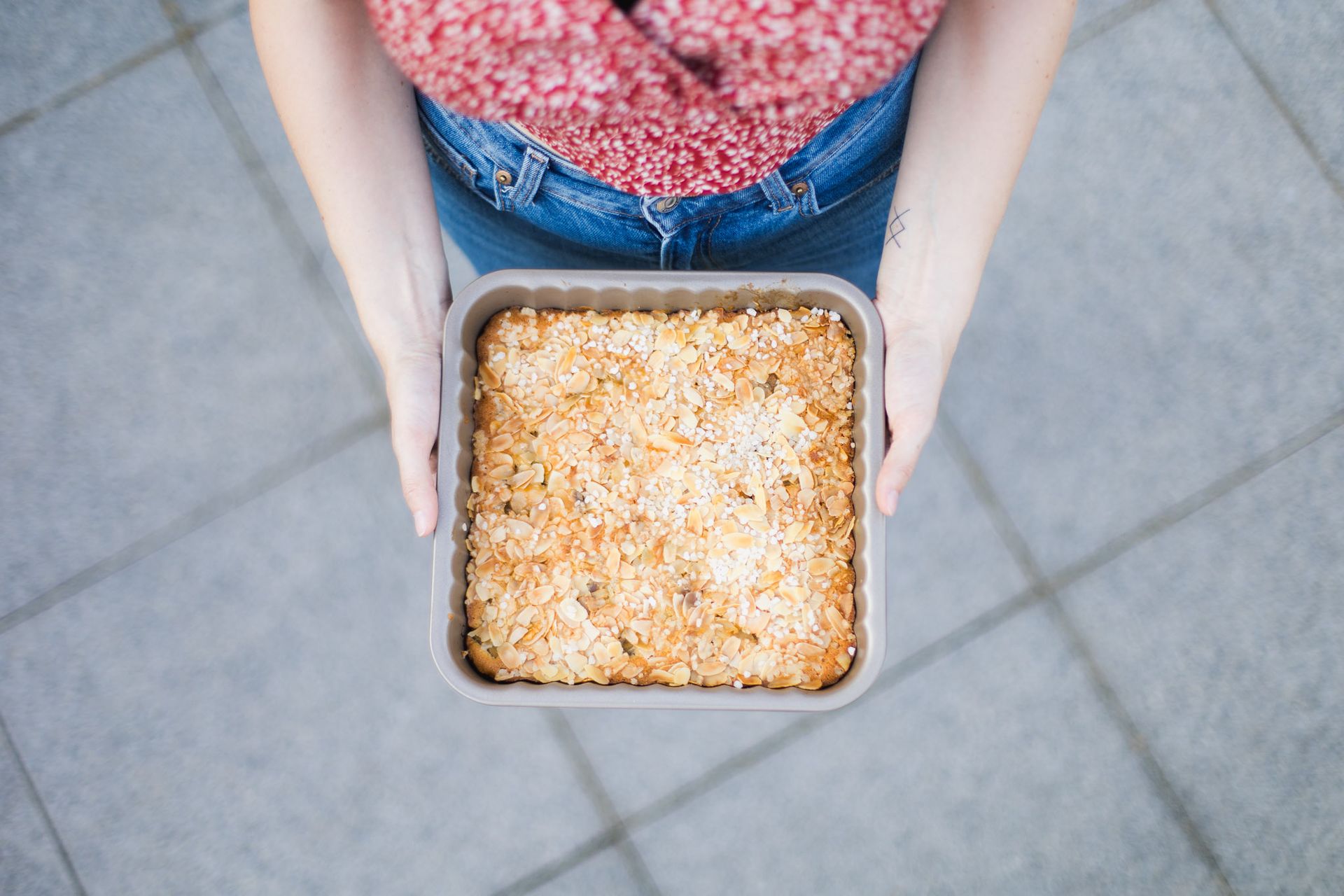Ingredients
- 200 g / 7 oz rhubarb (weight after peeling)
- 40 g / 1,4 oz icing sugar
- 200 g / 7 oz butter at room temperature
- 80 g / 2,8 oz sugar
- 3 eggs
- 200 g / 7 oz wheat flour
- 1 packet of vanilla sugar
- 1 teaspoons baking powder
- Slivered almonds
- Pearl sugar
Preparation
Wash and peel the rhubarb, then cut into 2-3 cm long pieces. Mix with the icing sugar and leave to stand while you prepare the pastry.
Beat the butter and sugar until the mixture is white and fluffy. Add the eggs one at a time, beating well between each addition.
Sift the wheat flour, vanilla sugar and baking powder into the buttercream and mix well.
Line the base and sides of a small rectangular tin or ovenproof dish with baking parchment, measuring approximately 25 x 40 cm. Pour in the pastry and use a spatula to smooth the surface.
Spread the rhubarb pieces over the cake and press them lightly into the pastry.
Sprinkle with flaked almonds and pearl sugar.
Place the cake on the bottom rack of the oven at 180°C / 356°F for 40 minutes. Check with a sharp knife or skewer to see if the cake is cooked. If the cake lacks colour at the top, place it higher up, but keep a close eye on it to make sure it doesn't burn. Leave to cool on a wire rack.

